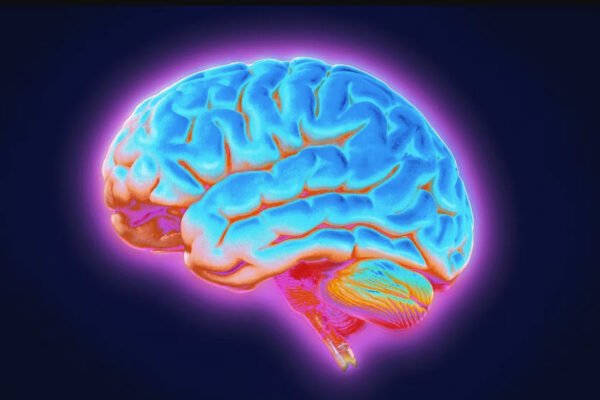How the next generation of mental health treatment is combining Neurofeedback therapy with cutting-edge technology
Following the pandemic, mental health has witnessed an awakening.
Not only are people more understanding of mental health issues, but more people than ever are seeking mental health support. While one study found that the pandemic triggered a 25% increase in anxiety and depression worldwide, another found that people are taking mental health screenings at a 500% increase from pre-pandemic rates.
As demand for mental health services increases, people are seeking out new, advanced treatment options to overcome their issues.
Neurofeedback therapy is one treatment approach that’s gained pace in recent years. The world’s best performers, from famous Olympic athletes and NBA stars to musicians and military special forces, have used neurofeedback therapy to train their brains, boost their performance, and improve their mental health.
Fortunately, neurofeedback therapy isn’t reserved for the wealthy and elite. Advancements in neurofeedback technology and its growing popularity make neurofeedback therapy a viable option for many seeking mental health support.
What is Neurofeedback Therapy
Neurofeedback therapy is a form of biofeedback: a noninvasive practice that uses electronic instruments to measure and display brainwave activity to the patient in real time. This technique measures brain activity to help patients understand and gain control of involuntary bodily processes, such as heart rate, muscle contraction, and brainwave activity, that they may not be aware of.
Neurofeedback therapy is used to help with emotional self-regulation of brain activity by informing people about how their brains respond to certain stimuli. With practice, patients can become aware of when their brain is in a specific state and, eventually, be able to recreate the desired state, such as relaxation, or avoid undesired states, like fear or anxiety.
The therapy measures specific brainwaves depending on the patient’s mental health issue. For instance, researchers will monitor alpha waves to measure a persona’s readiness, peacefulness, and meditative state. By measuring beta waves, researchers can measure a patient’s focus, tension, alertness, and excitement.
As a result, alpha and brain waves can be used to understand and treat different conditions. Doctors can look at alpha waves to monitor stress and anxiety levels, while beta waves can be used to analyse levels of attention and focus, symptoms related to ADHD.
Neurofeedback therapy doesn’t just monitor brain wave activity, but it teaches people how to control their brain activity. For instance, doctors can use games that reward patients when they increase or decrease certain brain activity. In one example, a patient played a racing game where they went faster when they decreased their theta brainwaves. These games can act as stepping stones to teaching people how to control their subconscious brain activity.
Over time, researchers have found that neurofeedback therapy can improve patient mental health. Despite neurofeedback’s recent popularity, a lack of resources and accessibility in the past has created a gap in our understanding of how effective the therapy can be.
Fortunately, as the mental health industry expands, new tools and technology are improving the capabilities and accessibility of neurofeedback therapy.
Neurofeedback Mobile App Technology
In the past, neurofeedback has required an arsenal of medical tools and equipment, to treat patients, usually in a clinical setting. These factors created significant cost and time barriers, which limited doctors’ ability to treat patients and conduct research.
However, modern advancements in neurofeedback technology are improving the analytical capabilities and convenience of this groundbreaking therapy.
Digitised Neurofeedback
Years of research and innovation have led to the creation of digitised neurofeedback tools that eliminate the need to monitor patient brain activity.
At its core, neurofeedback therapy helps patients disrupt harmful brain activity that leads to anxiety, stress, depression, and other symptoms. Developers have leveraged years of neurofeedback research to create digitised neurofeedback tools that help patients disrupt harmful brain activity without the need for expensive equipment.
These digitised neurofeedback tools can be packaged into mobile apps, and other digital services that guide patients through sessions aimed at breaking negative thought patterns.
Accessible Mobile App Treatment
Mobile apps are becoming a popular and easy way to access neurofeedback therapy. These apps allow users to follow a customised treatment plan at their own pace.
The treatment begins by asking users a series of questions to create a baseline understanding of the user’s levels of anxiety, stress, emotional balance and other factors.
Once a baseline is established, users will then be prompted to undergo a series of sessions that sound frequencies, customised to the user increase and decrease stressful brain activity. Over time, these sessions help the brain to normalise emotional responses to triggers and make the brain healthier over time.
The mobile app guides each user through a series of digitised neurofeedback sessions personalised to each individual. The app also provides features such as a digital journal to help users track their progress.
By digitising neurofeedback into a mobile app, this ground-breaking technique can be accessed by anyone around the world. Compared to traditional neurofeedback treatments that require clinical settings and costly equipment, users can enjoy neurofeedback therapy for a fraction of the cost.




